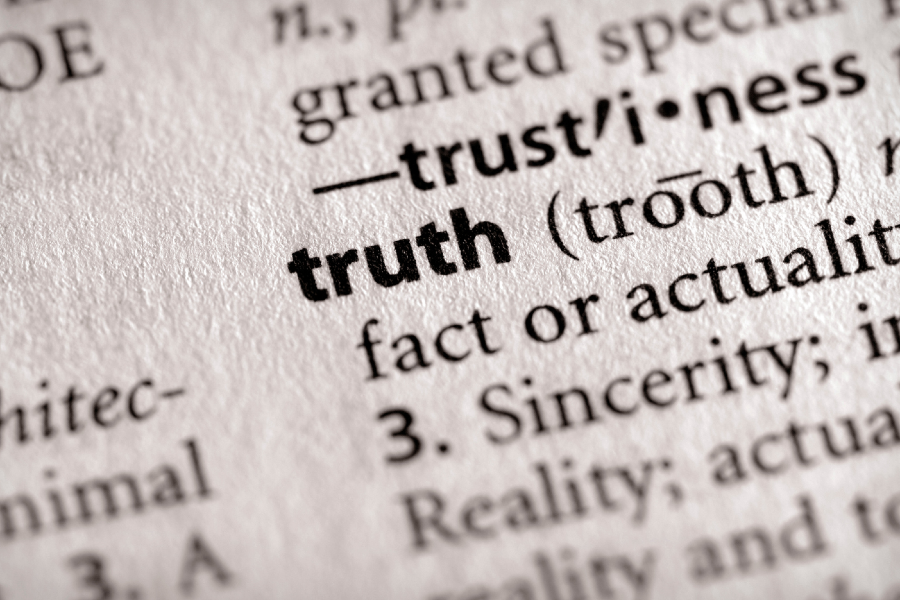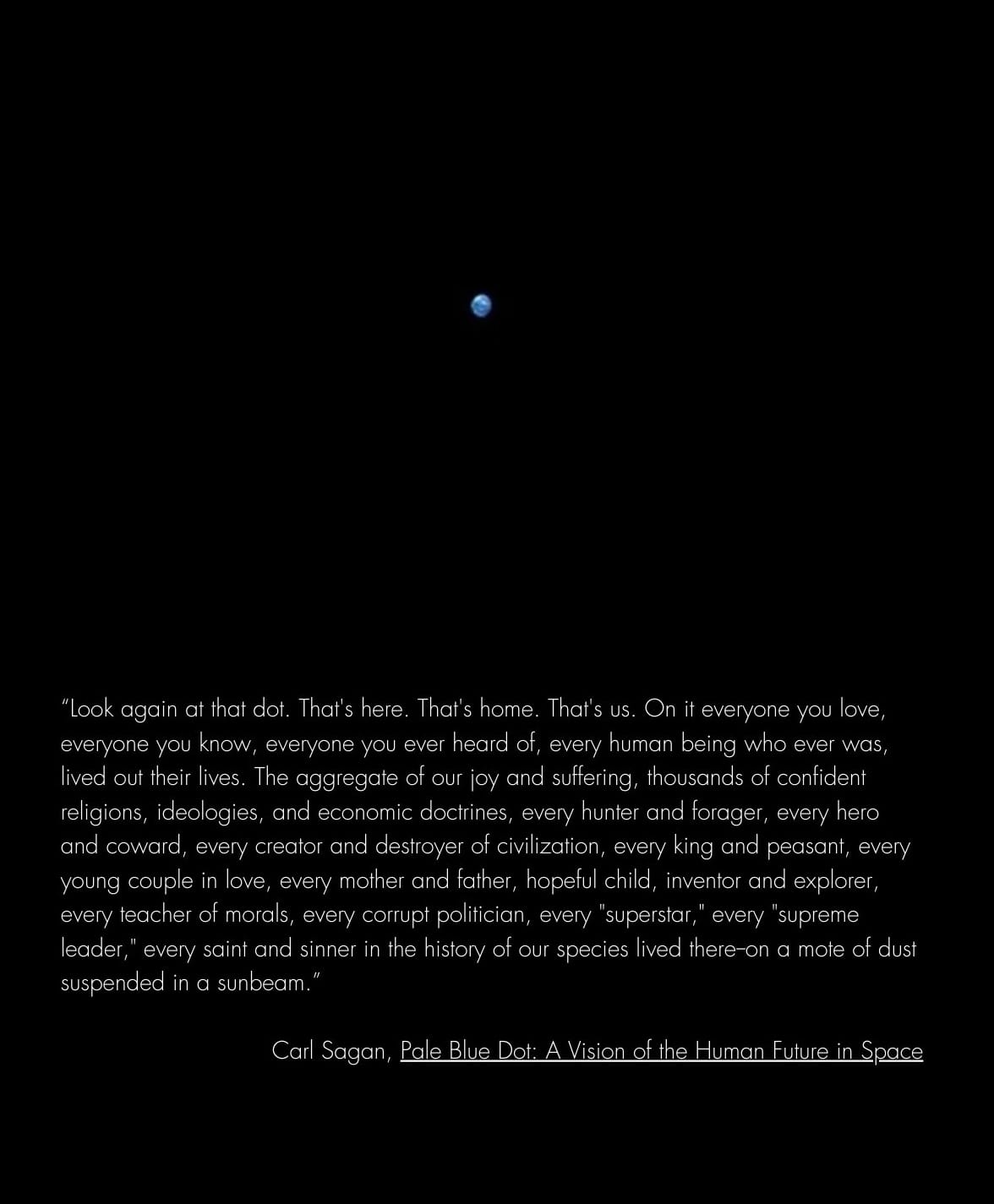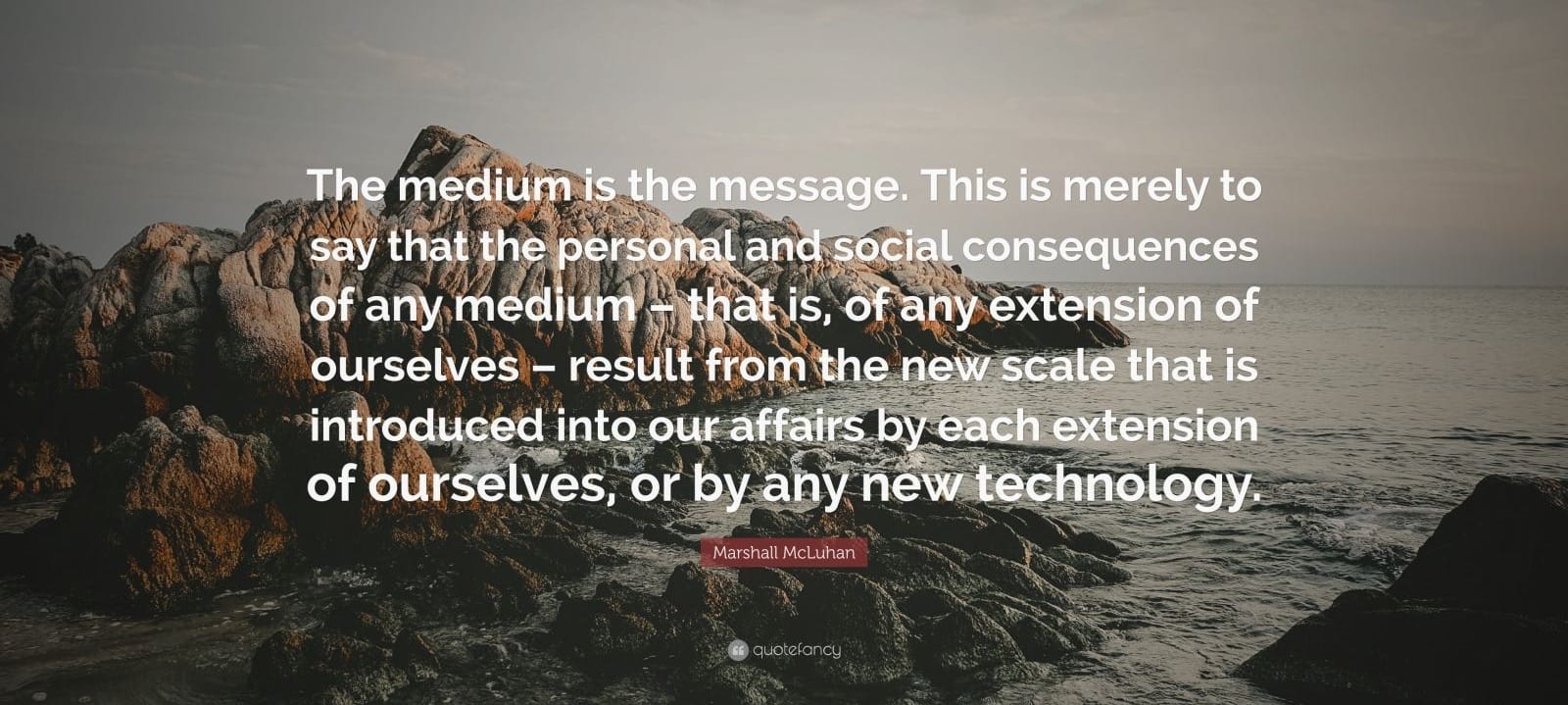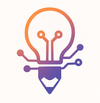Knowledge in the Age of Misinformation (or: Time For a New Science Paradigm)

Over 30 years ago, Carl Sagan urged us to gaze upon a pale blue dot suspended in an endless cosmic dark. The photograph, taken in February 1990 by NASA’s Voyager 1 as it drifted four billion miles from Earth, captured a stunning view of our planet. In that photo Sagan saw the totality of human experience: Every triumph and failure, each act of courage and cruelty, every discovery and moment of ignorance. All of it distilled into a single pixel. We evolved together on that flash of blue and largely through the exchange of information.*

The spread of information heavily influenced human evolution, helping us stand upright, think symbolically, harness the power of fire and craft necessary tools. We used it to create far-reaching trade networks then civilizations, societies, nation-states (196 countries and territories to date), and state-related governance. Information—and the ways it's communicated, transmitted and refined—is one of most powerful social forces in human history.
Both medium and message continue to shape ideological doctrine, philosophical thought, systems of governance and cultural movements. It’s also the foundation in every field of science, technology, engineering, arts, and mathematics (STEaM).
Before running, we crawled (the science part is coming)
Although new archaeological evidence suggests human language evolved 1.3 million years earlier than thought, scientists generally agree homo sapiens developed speech patterns 200,000 years ago. Our ancestors used their anatomically restructured vocal tracts to develop spoken traditions that made it easier to share knowledge, strengthen communities and preserve cultural memory. The oral era was replete with storytelling and casual conversation that altered human cognition and social development. The major problem was information’s lack of permanence. Having to rely on memory meant data was prone to distortion and hard to transmit across generations. Talking, though a fun pastime, was an unreliable mechanism for building “civilized" societies.

Enter writing, where independent scripts—Sumerian cuneiform, Egyptian hieroglyphs, Chinese oracle bone—made it easier to record, share and preserve information. Laws, administrative procedures, literature, and scientific discoveries were documented and transmitted across time and space. During the written era the most notorious hub of knowledge was the Library of Alexandria. Here, scholars from ancient Egypt, Greece, India, and Mesopotamia gathered and, sometimes, engaged in rapid fire, intellectual exchanges, spurring advancements in fields like astronomy and medicine. At Alexandria, knowledge wasn’t just stored—it was shared and debated, compounded, analyzed, and questioned.
The destruction of this vast repository of information stalled intellectual progress and, symbolically, marked the start of the grim slide towards the Dark Ages. More than anything, the tragedy underscored an important lesson for future generations: Sustaining knowledge depends on institutional support and decentralization. When you don’t protect both, information is vulnerable to erasure.
The thing about information: The faster it spreads, the easier it is for subversive, propagandistic, or controversial ideas to take hold.
Centuries later, Europe—along with parts of the Islamic world and Asia—emerged from the long shadow of the Middle Ages. What followed was an explosion of art, science, and humanism, fueled in part by Johannes Gutenberg’s groundbreaking invention; the catalyst for the print era. It took 40 years for 15th-century societies to be transformed by the mass, printed production of rare texts, literary works, and scientific ideas. This revolution changed how information was preserved, as well as how it was consumed. Books became widely accessible, literacy rates soared, and ideas spread like wildfire. Armed with new ideas, enlightened thinkers challenged centuries of dogma by radically endorsing scientific rigour, hard evidence, open debate, and reason. (Mainly, amongst elite segments of society.)
In spite of the benefits, we learned the faster information spreads, the easier it is for subversive, propagandistic, or controversial ideas to take hold. This became evident when paper moved to pixels on screens, and the way we consume and trade in information was reshaped in a single generation. Global connectivity skyrocketed. Content creation democratized. Piracy moved inland regarding intellectual property ownership. Defined by the concentration of information in ways the scholars at Alexandria could never have fathomed, our digital age has brought with it an onslaught of misinformation and disinformation. “Going digital” has propelled us forward and also corrupted our intellectualism, reducing us to a gamified, digitized spectacle.

When cultural norms evolve in real time personal identities get sculpted by memes, ideology, metaphor, and hyperbole. Fact and fiction blur, resulting in hyperrealities where “real” and “simulated” are indistinguishable. We rubberneck through this digital adolescence, struggling to find footing while information rushes past our faces. A handful of powerful actors hoard and weaponize data. Information is concept, idea and commodity—filtered, upcycled, sold, and traded.
And we, as informational byproducts, morph into organic wetware shaped by digital immediacy and algorithmic influence.
Our ‘pale blue dot’ in an informational crisis (here comes the science)
Wading through an epistemic crisis, we drown in a flood of misinformation that warps economic and political landscapes while actively eroding trust in the institutions meant to protect us, and each other. Deepfake videos blur the line between reality and fiction. AI-generated misinformation spreads faster than objective fact. It amplifies the real-time defunding and dismantling of scientific, academic and research institutions in the United States, rendering it wildly tragic, retrograde, dangerous and problematic. If NASA’s budget gets slashed by 50%, there’s only so many who can pick up the slack.
And it’s a stretch to think they'll do so with collective intent.
How do we raise resilience when loneliness spreads like an epidemic and vitriolic debates rage online? Or social media scams exploit the vulnerable, and fraudulent health claims cause irreparable damage? Informational corruption has bled into every aspect of daily life, shaping how we think, what we believe, how we behave and, ultimately, who we become. In this world, data moves faster than truth, affecting our ability to discern what to trust and how to manage the flood.
Then there’s conspiracy theories. One-third of respondents in a 2020 international survey across 28 countries said they believed a “foreign power or other force” caused the COVID-19 pandemic. In the U.S., nearly 46% of citizens subscribe to at least one major conspiracy theory. Fringe beliefs—the Earth is flat, vaccines cause autism, the moon landings were staged, secret Mars colonies exist—have gone viral. Misinterpreting or misidentifying patterns and connections in complex information can have staggering consequences—consequences that undermine civic engagement, distort education and scientific inquiry, and weaken our ability to tackle critical global challenges.
When people stop distinguishing reality from fiction, decision-making falters.
The consequences of conspiracy and misinformation should concern us all given how they accelerate polarized thinking and nihilistic indifference. Self-sabotage thrives in insecurity, and when we withdraw into ourselves, we disconnect from each other and become more vulnerable to self-destructive behaviors or thought patterns. Aside from motivating “dangerous thoughts” or “bad choices,” drinking the Kool-Aid of misinformation destabilizes by weakening education, undermining governance, and facilitating systemic, institutional and cultural failure. It also cudgels progress in domains critical to social safety and thriving, like science, medicine, and technology.
This is why the United States has long been, similar to other WEIRD countries and emerging economies, a target for misinformation. Psychological and informational warfare is a thing that has been on the radars of legislators. Yet, despite policy efforts, like the Countering Foreign Propaganda and Disinformation Act (CFPDA), information has, and is, used like a nuclear stockpile to corrode public trust in civic ideals, scientific action, and the institutions that ought to be securing our progress.
We stand on the sharpened edge of a blade, a few social media reels and handful of memes from becoming informationally dispossessed.
Two heads are better than one (why collaboration matters)
Although scientific and development endeavours are on the line, the future isn’t yet written. We can push back and fortify our position. We can start by protecting knowledge and combatting misinformation to, hopefully, reclaim the integrity of scientific practice and push the boundaries of discovery and exploration.
Early space science was initially driven by national aspirations and institutional moonshots, but accelerated thanks to scientists and innovators coming together over a shared curiosity to realize daring ambitions like the International Space Station. When the James Webb Space Telescope (JWST) launched in 2023, it was a testament to what international efforts could achieve. Built on shared purpose and transparent intentions, JWST has already refined our understanding of the universe, and our place within it.
In science (as political and politicized a domain as any other), how we choose to engage and share information matters as much as allowing for the "interplay of ideas" to protect against individual bias. The James Webb initiative—one of hundreds of thousands around the world—shows what’s possible when clear, accessible, and intentional communication and partnerships are prioritized. Another, CERN in Geneva, demonstrates how diversity advances what we know and fortifies human intelligence. With over 17,000 scientists from 110+ nationalities, CERN discoveries—like the Higgs boson particle—point to what’s possible when knowledge is spread across a strata of experiences, cultures, disciplines, industries and institutions. Studies confirm this.
The Diversity–Innovation Paradox, subject of a 2020 study by researchers at Stanford University, explains how underrepresented groups generate more novel scientific contributions but their work is often overlooked, undervalued and championed less than that of others. If we want the best ideas to shape the future of science, we have to ensure discovery is about more than who speaks the loudest—and also focus on who is heard.
Another pair of researchers reinforce the idea that collaborative science is the rule rather than the exception emphasizing that "interdisciplinary efforts are becoming more critical for scientific discovery and translational research." The past is full of broad, multi-institutional, and cross-border collaborations (Human Genome Project, LIGO, Human Cell Atlas, CRISPR and all its medical and biotech offshoots, PEPFAR, and CGIAR to fight food insecurity) that have inspired meaningful and collective replication at various levels.
Look at our ancestors. Real progress rides on the wings of teamwork and diverse perspectives.
Going the distance: In defence of science and collective action
The first few months of 2025 have already rendered Carl Sagan’s decades old ‘pale blue dot’ reflections feel remarkably, painfully, prescient. The precipice of the vast, unfiltered avalanche of information we stand on is so overwhelming it leaves us breathless in the face of manipulation, confusion, exclusion or the incitement of violence.
Good thing we are less defined by the chaos of the world than our ability to navigate through it. The ancient scholars of Alexandria knew this, as did the thinkers of the Enlightenment. Humans evolved according to a makeshift scientific method: Taking in, sifting through, testing, throwing out, integrating and scaling information to expedite progress. If we pursue this methodology while holding those in power accountable for distorting reality, we can do more than “just survive” the digital age, or the next some say will be dominated by artificial general intelligence.
We evolve forward, resilient, by way of critical thought, quality control, peer review verification, and a fearless division of labour. Knock-on effects for flourishing result from what we learn in the balance of collectives, not isolation. Time to shake off the freeze response and double down on more CERN-like initiatives and connect across social identity, capital markets and scientific domains.
Human progress is scientific at its core—carried out by the people, for absolutely everyone.
* Disclaimer: The views and opinions expressed here are solely those of the authors and do not reflect the official policies, positions, or endorsements of any affiliated institutions or organizations.
